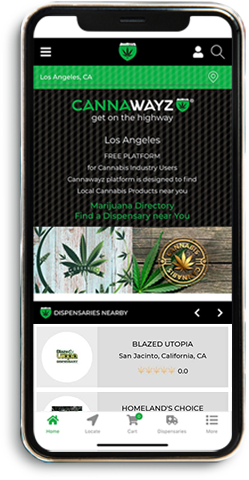Health stories

Nixon, The War On Drugs + Brief History of Cannabis Law
Ever wonder how the so-called “War on Drugs” got started?
On June 17, 1971, then US President Richard Nixon held a press conference during which he declared drug abuse “public enemy number one.”
This terribly misguided and highly destructive decision – regarded by many as one of the worst public policy decisions in US history – launched a “war” that has now raged for half a century.
And looking back on the past 50 years, what’s changed? Is the US government winning this “drug war?” Has drug production, importation, or sales declined? Has drug use abated? Nope. Nope. And nope.
In fact, recent statistics show domestic drug production, foreign drug importation, drug sale revenue, and most tellingly, drug consumption are all higher than ever!
And in the wake of this “war,” we’ve seen millions killed or imprisoned, leaving countless lives decimated the process.
Now, this isn’t to say there’s no need for regulation. The present-day heroin-driven opioid crisis and the crack cocaine epidemic of the ‘80s and ‘90s certainly disputes the “open drug market” perspective. But the “drug war” has clearly proven an unmitigated FAILURE.
And moreover, how did cannabis get lumped into this group? Cannabis is NOT crack or heroin. It’s not dangerous. In fact, it’s impossible to OD on cannabis. And it’s not physically addictive.
Yet, cannabis is classified by the federal government as a Schedule I Controlled Substance. Making the use, possession, and sale of cannabis a crime.
So, how did we get here? The Cannawayz.com team had the same question and decided it’s time to investigate the Case Against Cannabis…
A Brief History of Cannabis Law
From the Harrison Act to Federal Narcotics Control Act
From 1840 to 1900, cannabis was legal in the United States and regularly used in medical treatment. In 1900, a (mostly “morals” drive) push to regulate cannabis began in earnest. And in 1914, the passage of the Harrison Act made cannabis use illegal.
A year later, California made cannabis possession illegal. By 1937, 23 states had passed similar laws. In 1942, cannabis was removed from all federally regulated pharmaceutical guides. And cannabis was then included in the Federal Narcotics Control Act of 1956 (the precursor to the Control Substances Act the currently governs all “illegal drugs”).
The Controlled Substances Act
In 1970, the federal government, again, under the Nixon administration, passed the Controlled Substances Act. This still inf-force legislation categorized controlled substances according to a 3-tier “schedule.” And with the passage of this act, cannabis was classified as a Schedule I controlled substance, which deemed it to be a “dangerous drug” with “no medically redeeming value” and a “high potential for abuse.”
Following the Controlled Substances Act’s passage, a dozen states began exploring the possibility of decriminalizing cannabis. In response, Nixon appointed a commission to review the newly codified cannabis laws. After a thorough study, the commission recommended decriminalizing cannabis. Nixon, however, rejected their suggestion.
The Decriminalization Movement + The Rise of Medical Cannabis
11 states decriminalized cannabis between 1973 and 1978. Also, in 1978, New Mexico became the first state to recognize cannabis’s therapeutic potential.
After a long gap, during which cannabis laws remained mostly static, California became the first state to legalize medical cannabis in 1996.
In the two-and-a-half decades since California’s landmark law passage, nearly half of all US states have legalized either medical or recreational cannabis. And a majority of states have revamped their cannabis laws, with revisions ranging from outright legalization to decriminalization.
The Current Legalization Movement
Despite the considerable change, in both laws and attitudes, cannabis remains classified as a Schedule I Controlled Substance.
The MORE Act, first introduced in Congress in late 2020, and reintroduced in 2021, aims to legalize cannabis at the federal level.
In addition to legalization, the MORE Act also includes a significant “social equity” component, which dedicates federal grant money to aid communities hurt most by the “war on drugs.”
But this aspect of the proposed legislation has proven to be a turn-off for many Republicans, who tend to see "community aid" program expenditures as "unnecessary pork." Meanwhile, it will likely take at least 10 Senate Republicans to pass the MORE Act.
All of which leaves federal cannabis legalization at a stalemate. Which is roughly where it’s been for decades.
What’s Next?
Tough to say exactly. But the steady chipping any at cannabis’s illegal status indicates nationwide legalization is now only a matter of time.
Copyright © by Cannawayz. Cannawayz platform helps you to find a dispensary or delivery nearby.




